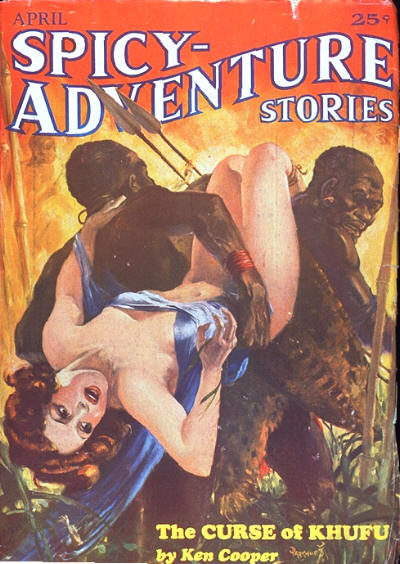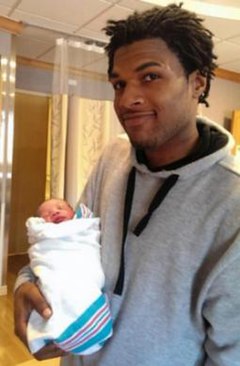We remember Amy Bishop (now known as Amy Bishop Anderson), a white professor who
fatally shot 3 professors, Adriel Johnson, Maria Ragland Davis, and Gopi Podila, and wounded 2 others at a faculty meeting in Huntsville, Alabama, on February 12, 2010.
(Two of those killed were Black, adding yet another form of violence to which the academy exposed them, along with the mental, institutional, emotional, and physical violence of police, students, staff, community members, and other professors.)
It seems that no one expected Anderson to respond violently to her denial of tenure the year before, even though she had a
very violent past that, if she had been Black, would have been enough to block her from becoming a Harvard-trained biologist, a respected inventor, an amateur writer, and someone who was able to kill and terrorize multiple times while staying out of jail over a span of more than two decades.
In 1986, she had killed her younger brother with a shotgun blast to his chest. Although the 1986 killing took place under suspicious circumstances, the police ruled it "accidental." Police had also suspected Anderson and her husband in connection with a 1994 bombing aimed at a previous employer. And Anderson had been arrested in 2002 for punching another woman in the face at an IHOP, although that case was dropped. When Anderson committed the triple murder in Alabama, she did so with an
illegally possessed Ruger 9mm firearm, sort of like the weapons that Black men are routinely and disproportionately arrested and imprisoned for possessing.
In the racist society/world we live in, white women are generally construed as "fragile," "innocent," "gentle," "pure," and "in need of protection" (rather than being understood as the ones we need to be protected from, just like white men). It takes a coordination of several sets of forces, from Hollywood to barbie dolls to all the other things that enforce white women as the only true women, including ultimately the police, who see to it that gender roles make this construction stick as a defining characteristic of white womanhood. Her mother seems to have used her white womanhood to have a kind of pull with the police and was able to get them to drop murder and assault charges and bury a homicide. Black mothers do not have this power, and are rarely approached as mothers or women.
Police are just the first step for most Black people, followed by DA, PD (public defender), jury, judge, CO (corrections officer), warden, PO (parole officer), and several other arms of the prison-industrial complex. Each step in that process can convict you or force you to accept a plea or add time to your sentence or bust you back after you've been paroled or tarnish your professional image beyond repair. They are enough to kill you, if you are Black. And they are generally unchecked, by empathy, mercy, morality, bystanders, body cameras-- or even the fact that you didn't do anything "criminal." For Anderson, the police were the first and last step before charges were dismissed-- until she murdered three people. The police protected her even from themselves. If you are white, the momentum of the prison-industrial complex has no gravity, and so cannot gain the traction and inevitability of a runaway train. Implicit bias toward you tends to not make you a target of state and civilian violence. For whites, the violence of the state, says Frank Wilderson, "
is repeatedly checked."
Taken together, this multiply sourced stereotype creates a structural position of white womanhood, and may have been a significant reason why, despite Anderson's record, the racist, sexist structure allowed her to pass right under the radar in ways that state and civil society's hyper-surveillance of Black bodies would not have let pass. Anderson was allowed to kill multiple times while maintaining her freedom, continuing a pattern among white people of killing with impunity that dates back at least to Columbus. Nothing she did-- not even a prior homicide, a suspected prior attempted murder, and an assault for which she was arrested-- could make her "fit the profile" of someone the police ought to be protecting the rest of us from.
Meanwhile, Black men are jailed on terroristic threat charges for merely uttering the word "bomb" in a classroom (as happened to a brother i know in Davis, California, a few years ago) and killed for merely
picking up a bb gun in a store in an open-carry state (as happened to John Crawford in Ohio).
Most importantly, the two above-mentioned patterns are not separate. They are mutually reinforcing. In other words, Anderson was understood to not be a threat
because she was defined in opposition to Black men, like John Crawford, who are seen as a threat.
 |
| The "black brute" stereotype shows how the innocence of the white woman relies on the wickedness of the Black man. The contrasts between the two stereotypes couldn't be greater. Not only are they different in color and musculature but the white woman's face is lit, rendering her available for empathy, while the Black man's face is obscured, as though he has no feelings except dumb animal drives. Anderson benefited from this standard Hollywood trope. Johnson and Davis were victimized by it. |
Thinking intersectionally, we might notice several attributes in her life that position her according to socioeconomic class and education as privileged, not simply the fact that she is white in and of itself. Yes, Anderson has a PhD from Harvard and several prestigious postdoctoral fellowships. Yes, she was from the Boston suburb of Braintree, Mass., and raised in a well-to-do neighborhood, in an historic old house, and a community where people knew the police chief by his first name. All of these things position her according to her class.
But this only amplifies the original point. Class is a function of race, not the other way around. Capitalism is a weapon that is used against Black people to sustain the anti-black structure. Never forget that Black people are disproportionately poor, and the poor are disproportionately Black.
In the case of Anderson's life, capitalism was the mechanism by which her suburban life was able to maintain its meaning and coherence as a space safe for families like that of her parents-- the Bishops. The Bishop family was able to live in a middle-class suburb outside of a Boston that was, in Anderson's younger years, becoming increasingly Black. They
benefited from white flight. Capitalism would also have been the way that Black families were simultaneously kept in the inner city of Boston, via practices like
redlining. So, again, to the extent that she was privileged, Black Bostonians, and poor folks in general, had to be deprived. Capitalism is a tool in service of antiblackness. Capitalism might even be thought of as antiblackness, weaponized.
One
article even describes families like the Bishops living in the suburbs and being "proud" that they escaped the "grittier precincts," something that, of course, is at least partially a code word for Black areas in cities that have been subject to white flight and the so-called "benign neglect" of late twentieth-century capitalism. Taking pride that you left people behind in killing fields like Boston should make us wonder why (or whether) more white bourgeois families aren't serial killers.
Despite Anderson's commission of actual homicides, she doesn't fit the profile for a homicidal threat that the police should be shooting down in the streets, thereby enabling her to kill again...
 |
| Adriel Johnson |
...and again...
 |
| Maria Ragland Davis |
...and again...
 |
| Gopi Podila |
...and that is why Dr. Amy Bishop Anderson is another PROFILE IN WHITE WOMEN'S PRIVILEGE.
Please remember, white privilege is really just a nice way of saying white power, and it is based on Black death.







